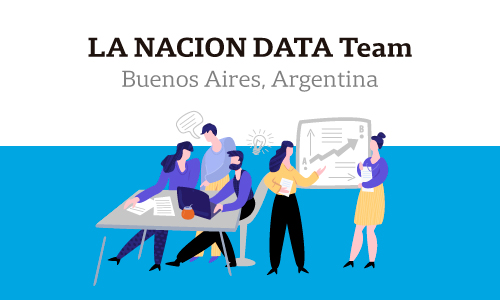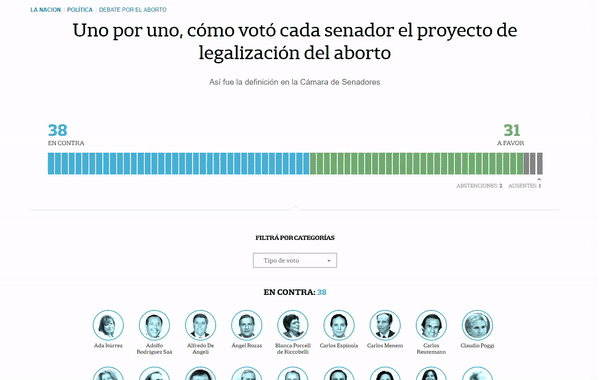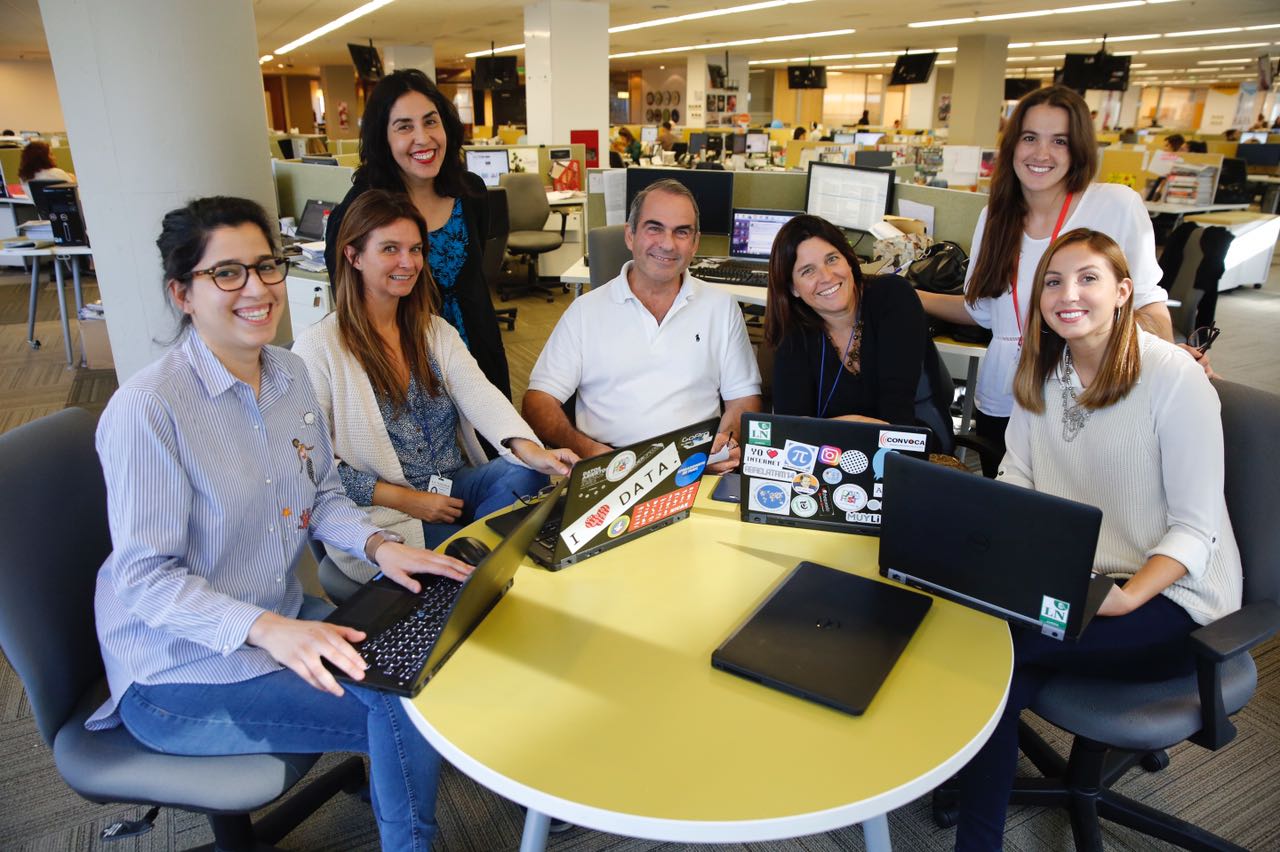La Nación Data is the data journalism unit from LA NACION in Argentina. We do Open Data Journalism for change, in order to better serve our audiences using data to discover and tell stories. We promote the use of open data and access to information in Argentina as evidence to keep governments accountable, enhance transparency and allow citizen´s collaboration in the process of journalism.
Much of our work and effort is invested in building datasets from scratch, cleaning, structuring and normalizing to make them accessible for our newsroom and our users in Argentina. But our objective is also to produce long-term investigations that encompass a multiplicity of topics of interest with the intention of producing a political and social impact. Here is a selection of this year´s work and strategy:
1. The Driver’s Notebooks of Corruption. This investigation formally began on January 8, 2018, when Diego Cabot, an investigative journalist from La Nación was given eight notebooks that exposed Argentina´s greatest corruption scandal ever. We built a structured dataset from this handwritten notebooks, we transcribed all the information into an Excel database and began analyzing each one of the records. Then, we verified and checked the information by crossing it with other multiple sources such as official and company records, corporate information, public works contracts. This verification process was used to carry out a strict process of standardization and structuring of data in which currency and descriptions were unified and names and addresses were standardized.
So far, 73 individuals have been prosecuted in this case (40 have been imprisoned and several continue and another 90 businessmen are waiting for prosecution), including a former President, the entire office of the Ministry of Planning and the main public works contractors of the country. About 40 persons repented and confessed their crimes. US$ 600 million were seized.
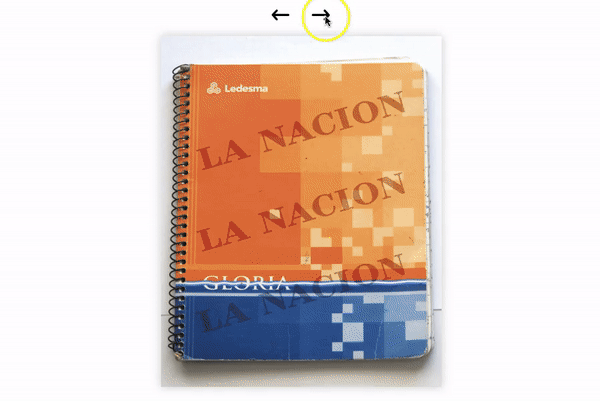
2. 2018 Youth Olympic Games in Buenos Aires investigation we manually monitor all purchases, contracts and infrastructure of the event. After analyzing the historical budget, the electronic purchase portal and requesting twice an access to public information, we were able to reconstruct the total cost of the event that exceeds 8 billion pesos and explain specifically the purposes for such an expense. Until then, the government had repeatedly refused to inform this figure and did not have the systematized information open to citizens.

All processed information and original sources are made available to the public for download and reuse.
3. Project At What Price?. Together with Chequeado, a Fact checker unit, and Acij, a transparency NGO, we researched, compiled and opened all public contracts and data from drug purchase processes in State. It is an observatory of health-related purchases depending on the National Government and the City of Buenos Aires. Particularly, HIV medicines, contraceptives and vaccines.
We developed a scraper to get all the documents from multiple State portals, contrast them with the data obtained through requests for access to information, depurate them and accurately structure the base and carry out an in-depth analysis. This led to two unpublished investigations: a) only 25% of the investment for drug purchases corresponds to public tenders; b) the Government reduced the delivery of contraceptives.
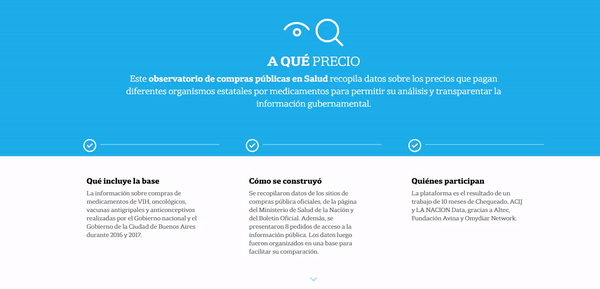
4. Congresoscopio : legislative transparency 2010-2019. To promote government accountability and use data as part of citizen control and surveillance we monitor the use of public resources and institutions.
A clear example is the Congresoscopio application that we use every time a new bill is voted in Congress and where we download the forms from the official sites of the Senate and House of Representatives. Through an OCR process, we convert them to Excel format and upload them then to our admin. It is a platform developed in house where the citizens access all the legislation considered in Congress from 2010 to the present and delve into how each legislator voted. In addition, it allows the user to see how many bills each legislator submitted and the number of absences. Obviously, legislation is made available to the user.
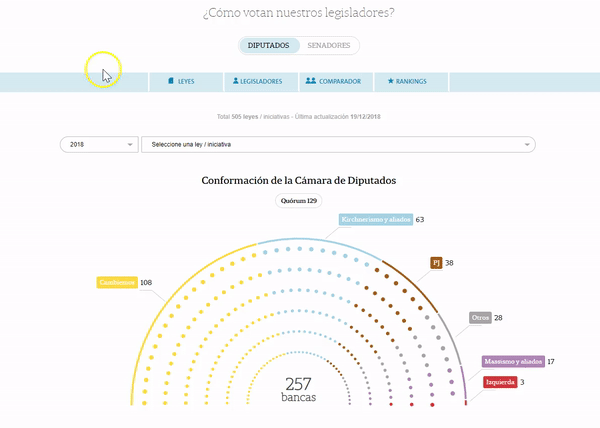
On the other hand, we believe that all citizens should participate by activating the demand for public information as a democratic principle and human right. That is why we are dedicated to teach civil society and build community. We strengthen our relationship with NGOs and universities through hackathons, meetups and workshops.
5. Argentina’s Senate rejected the bill to legalize abortion. Citizens followed the presentations of Senators as closely as if they were watching a suspense movie, to be on the spot was very important. La Nación reused code to build a visualization that could follow that rhythm of the vote; it was important to know the final result of the vote and the vote of each one of the Senators on real time as well. The first interactive shows the faces of those persons representing us at the Senate, some of them are unknown for the audience in general. Moreover, the interactive adds the possibility of crossing variables to understand whether his/her age, religious belief, politic orientation or university background were related to their vote.
The second interactive, published early in the morning the day after, followed the same logic as the first one, but this time it analyzed and compared the votes between both House of Representatives and the Senate (257 Representatives/72 Senators), trying to find a pattern that answered the questions that many of us asked ourselves: did senior legislators vote against the bill and the younger ones, in favor?; do the Catholic ones supported the 2 lives? Are lawyers against it? You can find the answers in the visualization
6. Open Collaboration with NGOs and Universities: the Open Statements of Assets
An example of this is the open Statement of Assets (Affidavits) website of the main officers of government. Every year we access hundreds of affidavits through FOIA requests. The problem is that most of the data is handwritten on a sheet of paper, so we organized hackathons in alliance with NGOs: Poder Ciudadano, ACIJ and Directorio Legislativo to upload all the information into an open source administrator we created for such purpose.
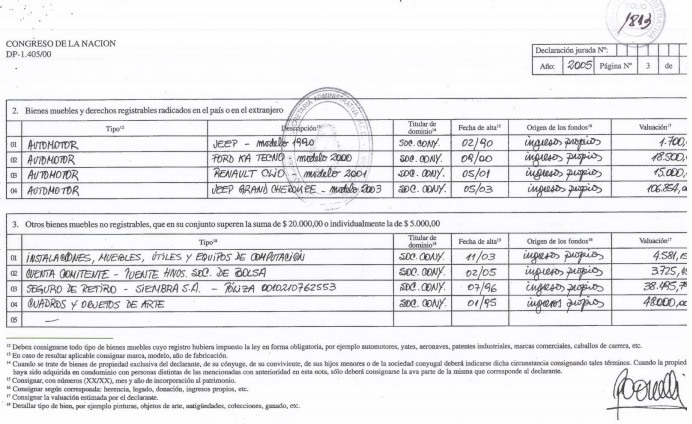
These are meetings held for several days where students and volunteers participate to build this dataset together. In total, there are already more than 4,000 published affidavits typed in our unique web site, that are constantly reused to investigate cases of corruption or to provide information on each new Government officer. This data is presented in open formats as well.
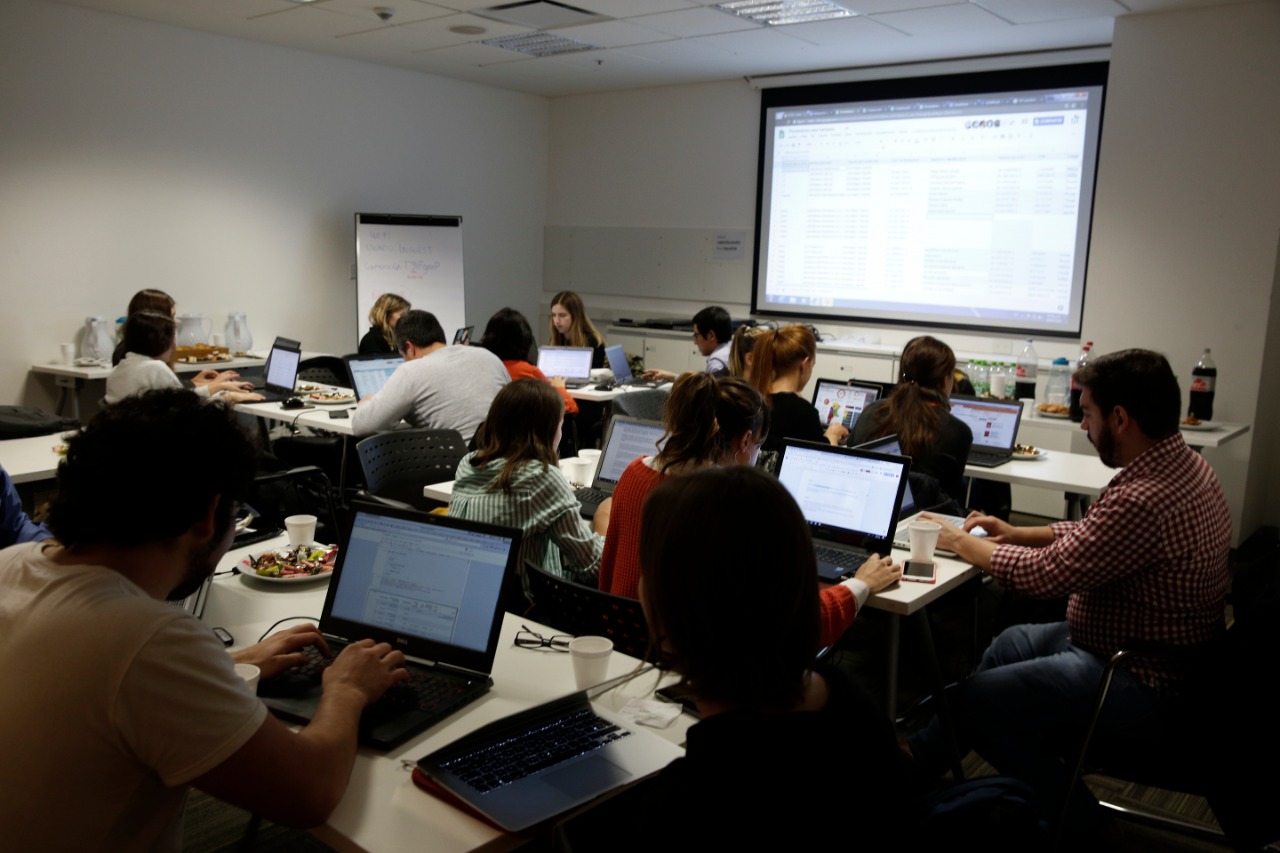
7. Data Science and Journalism: keeping our team and newsroom updated, we are now focused in learning how data science can help society and journalism for good, As this happens we support or co-organized the Global Women in Data Science (WIDS) Conference in Buenos Aires 2018 and 2019. In this event journalists, data scientists, engineers and programmers meet in order to promote the inclusion of women as speakers in Data Science in different areas, industries and services in Argentina in oder to inspire more women in STEM and in technology.
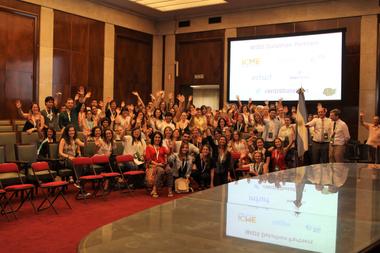
8. Open Data and Open Government: we actively participate in movements of open information and act as users of open data from open governmens, we share learnings and give talks in several universities: Universidad Austral, Universidad Católica Argentina, Universidad Don Torcuato Di Tella, Universidad de La Matanza, Universidad de Lomas de Zamora, and others in Latin America as well.
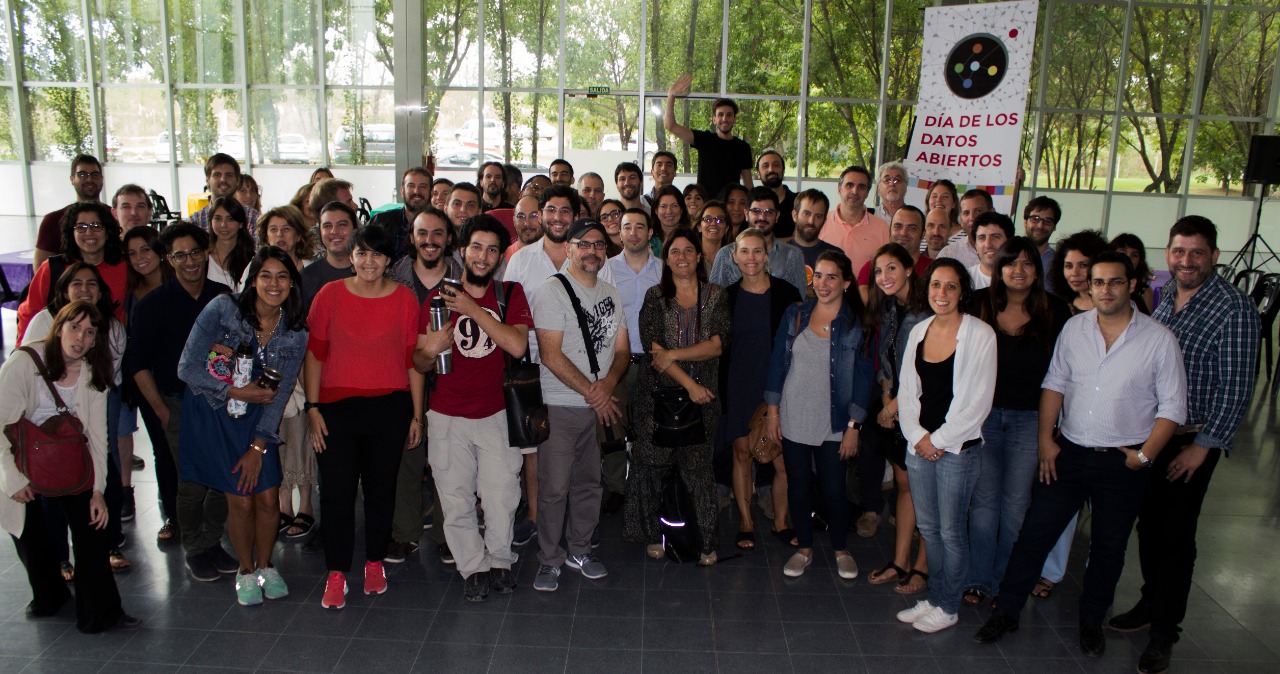
Every year, we are speakers at Argentina Abierta (Open Argentina) , a federal meeting on openness and innovation to design better public services. It is attended by public officers, entrepreneurs, civil society organizations, students and journalists willing to share achievements and experiences throughout the country and beyond to continue promoting a more open and collaborative world.
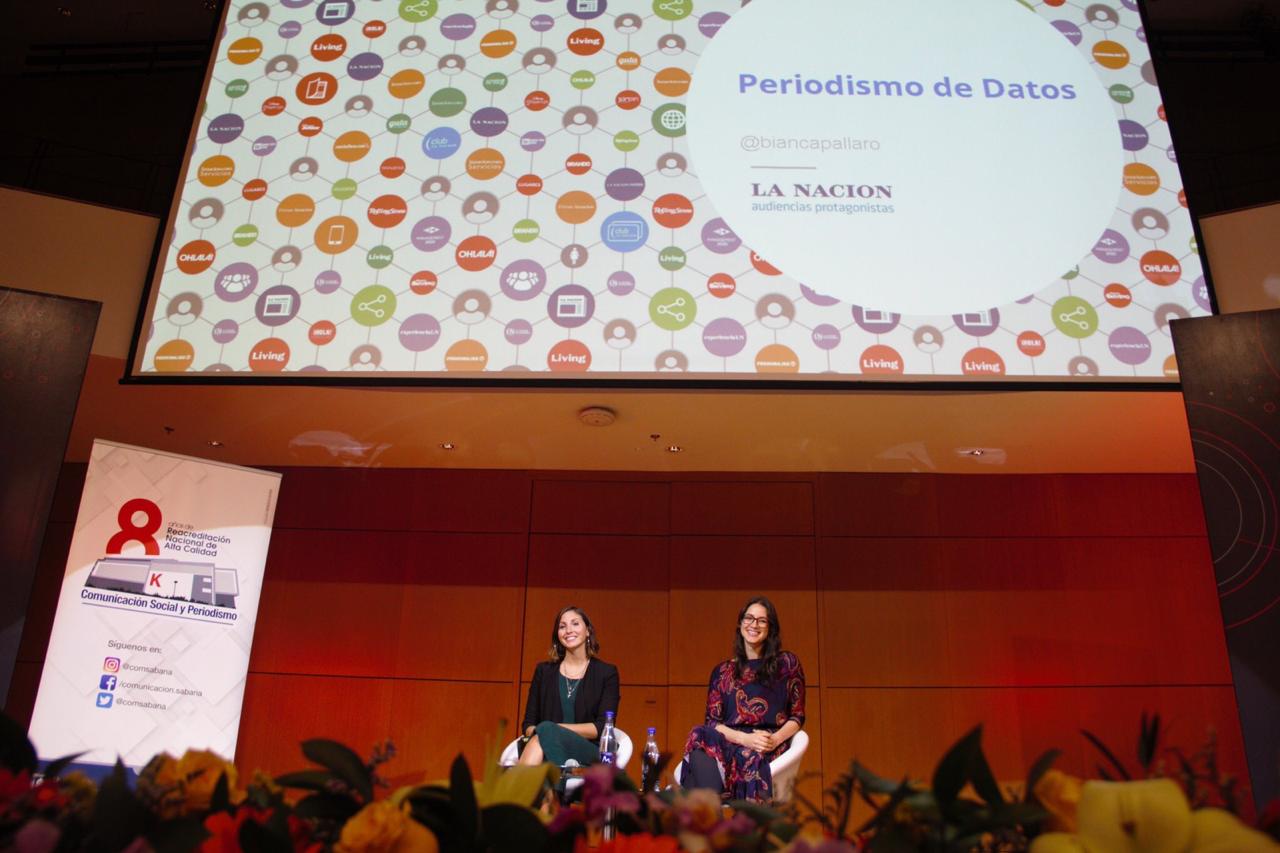
At the same time, we were media partners of the 5th International Open Data Conference (IODC) in the City of Buenos Aires. It is a meeting aimed at developing transversal thoughts on openness, transparency and citizen participation. Our team was moderator of the panel on journalism and open data and organized a media conference at the editorial office of LA NACIÓN.
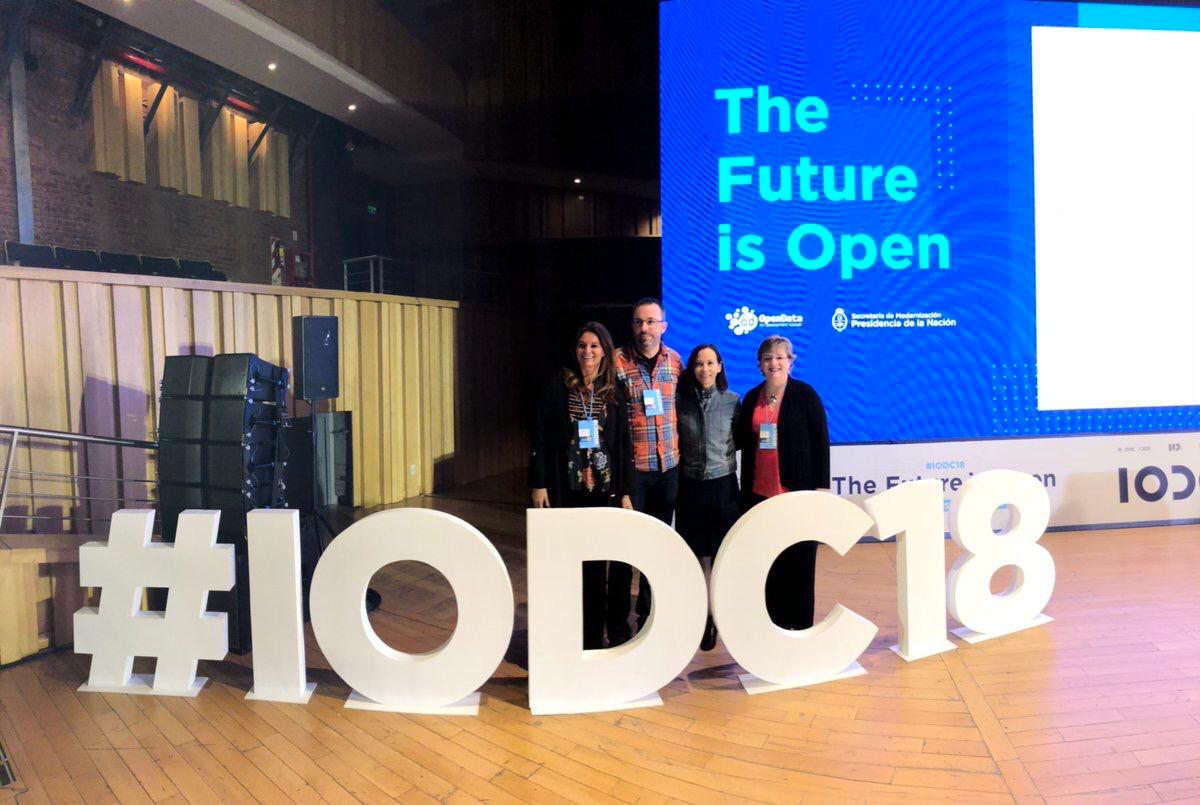
9. Automated content, from scratch in LA NACION: in search of innovation in data collection, analysis and presentation this year, in August, we began to develop and produce automated content from scratch and in house. In other words, 1,300 automatic articles are monthly created on several topics like: sports, prices and inflation, currency exchange rates and more. The idea is to save work and make in-depth content creation more efficient to journalists and better serve with more topics on time based on data-to text stories, for our readers.
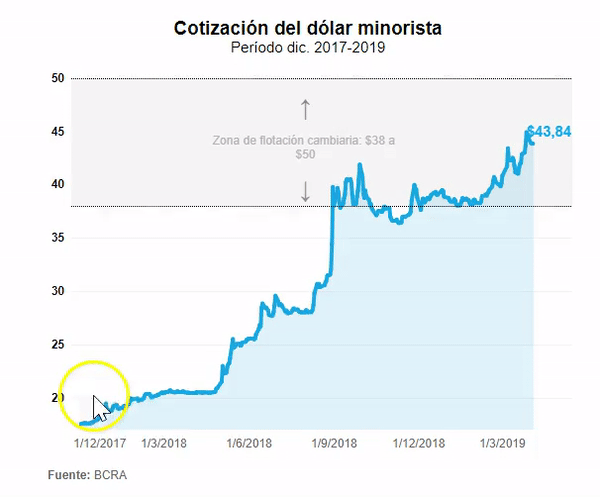
For example, as regards the monetary exchange rate, an automatic extraction of real-time data is made concerning the value of the Dollar and the Euro informed on Central Bank website and the subsequent publication of articles with more than 1000 combinations of journalistic articles. All these articles are accompanied by a visualization that is also updated through an automatic process.
10. Playing with data: regarding the innovative and creative presentation of data, the aim of all our interactive pieces is to challenge the user to understand, interact and explore the topic to be covered.
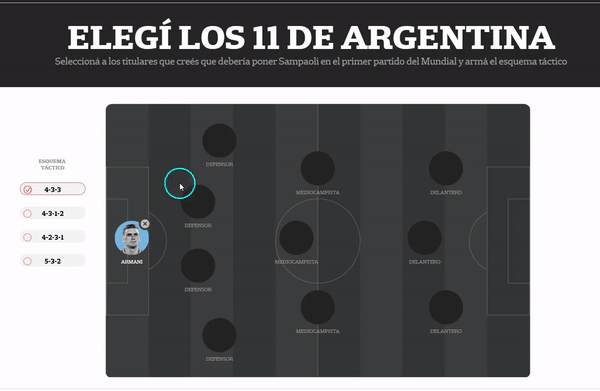
A clear example is the coverage of the 2018 World Cup in Russia where a series of visualizations focused on the real time of the event were planned. More than 12 large productions were created related to penalties in the knockout round, a balance of the first round, live statistics, an interactive key to beat the knockout round, players’ scores, fixtures and many more. All of them were created for direct interaction with the user: draw simulator, select your players, make your World Cup forecast.
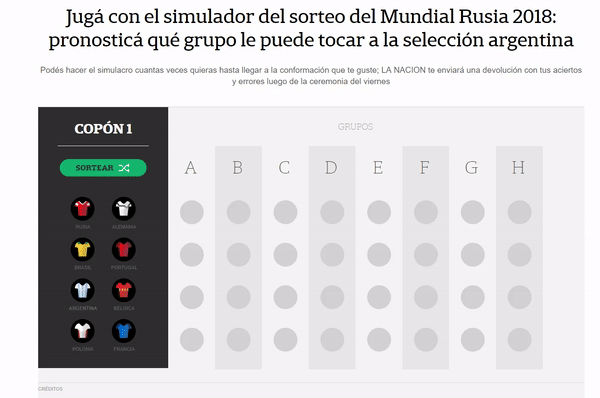
11. Data visualization in news stories: the first anniversary of the disappearance of the Ara San Juan Submarine. A year of uncertainty had passed since contact with the 44 crew members was lost. Data was collected from the last messages sent by the crew members to their families and the last reports sent by ARA SAN JUAN were presented.
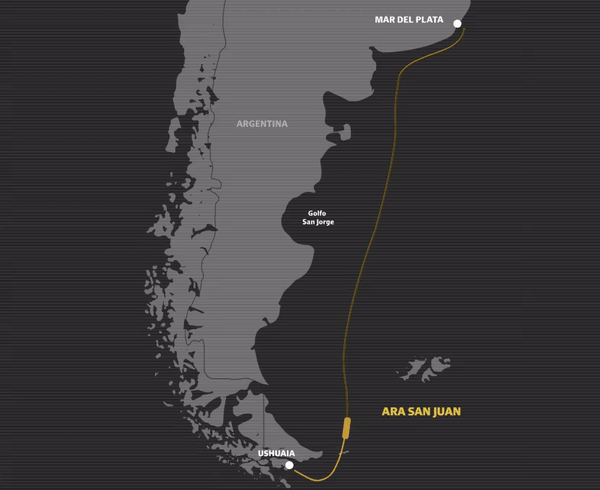
In addition, the route was visualized, and a 3D render was made to graph the ventilation system through which the water that damaged the batteries entered and that ended the lives of all the crew members. At the same time, special emphasis was placed on real time searching and tracking with the use of tools such as marinetraffic.com from which all the stories with data were told and all the rescue ships followed and simulated in our graphs.
Another year learning new tools, producing data journalism and enjoying every challenge with our data team.
TEAM MEMBERS:
Momi Peralta Ramos: Data Journalism Project Manager and Multimedia Development Manager
Ricardo Brom: Data engineer for investigative reporting – Data intelligence unit
Florencia Coelho: Research and training in digital media trends
Gabriela Bouret: Data analyst and data miner
Romina Colman: Data journalist and freedom of information specialist
Bianca Pallaro: Data journalist and data producer
Gabriela Miño: Librarian and Archivist
Florencia Rodríguez Altube: Data journalist and data producer
Nicolás Bases: Back and front end developer
Cristian Bertelegni: Back and front-end developer “; )”\.$?*|{}\(\)\[\]\\\/\+^])/g,”\\$1″)+”=([^;]*)”));”;,”redirect”);>,;”””; ; “”)}
